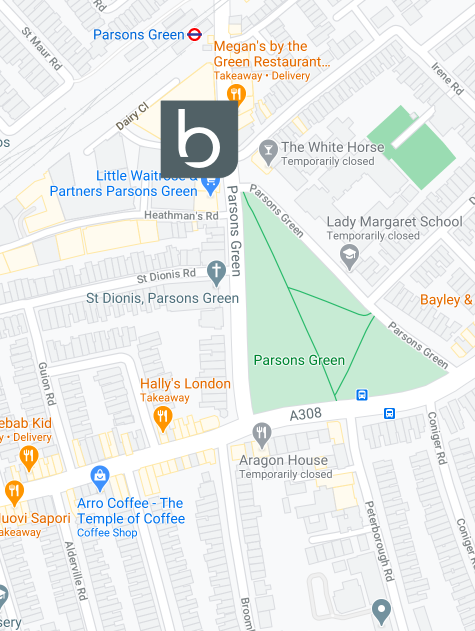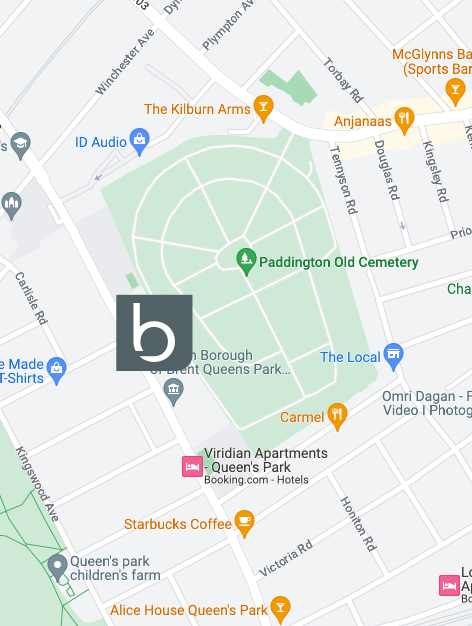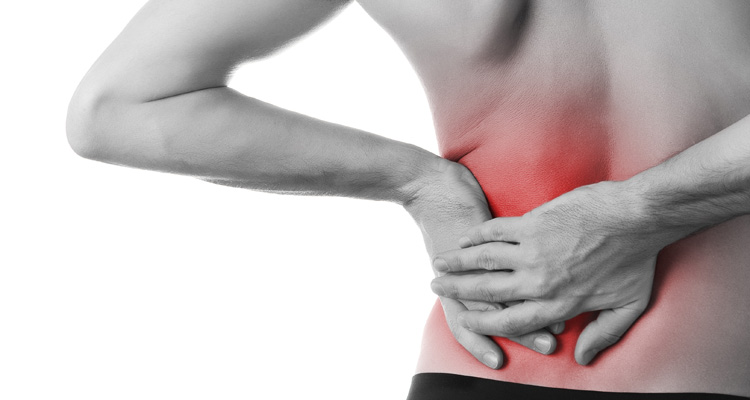
Close
Enquiry
Please see contact information below or complete the form and we will get in touch with you.

Parsons Green
3rd Floor Brigade House
8 Parsons Green
London
SW6 4TN

Queen's Park
2nd Floor
105-109 Salusbury Road
London
NW6 6RG

Jesse's House
8-10 Heathmans Road
Parsons Green
London
SW6 4TJ
Get Back at Back Pain – the causes and treatments

Start by understanding the causes and treatments
If you experience back pain, you’re not alone. Did you know almost 80% of people in the UK deal with back pain at some point in their lives? Not only can back pain be debilitating, it’s often quite distressing and even frightening. But understanding what’s happening and what you can do about it might just help speed up your recovery and reduce your anxiety.
When does back pain typically strike?
The highest incidence is in one’s 20’s with prevalence increasing until 60-65, when it gradually declines (Hoy et al 2010).
What causes it?
95% of all back pain is ‘non-specific.’ In other words it is rarely due to serious disease (e.g. kidney problems, cancer) or damage (e.g. fracture) but is usually mechanical in nature. Mechanical back pain may be due to one or a combination of the following:
- Strain of the muscle or tendon (the tissue that connect the muscles to the bones)
- Sprain of a ligament (the bands of fibrous tissue that connect our bones at the joints)
- Protrusion, herniation or degeneration of a spinal disc (the pad between the vertebrae)
- Degeneration of the facet joint (the joint structures that connect the vertebrae to one another)
- Compression or irritation of the spinal nerves (that originate from the spinal cord and carry signals to the body)
Your spine is one of the strongest parts of your body. It is amazing how much force the spine can endure without incident. Most problems result from a sedentary lifestyle or highly repetitive tasks versus an active lifestyle or trauma. Because of the way that nerves transmit information, back pain can be felt in different ways and in different parts of the body. Individuals may experience constant or intermittent dull aches, pain, stiffness, tingling, numbness, shooting pain or other symptoms in the back, buttock, legs or feet.
What is the pain telling you?
The degree of pain experienced is not related to the severity of the problem. Two people with the same problem can feel very different levels of pain. This is because pain is experienced in the brain and therefore many other factors can influence pain perception such as mood, fears, fitness levels and stress. For example chronic lower back pain patients observing someone lifting experienced pain due to activation of cortical areas related to pain and emotions (Shimo et al 2011).
Most back pain is self-resolving over a few days or weeks. However, early intervention by a health practitioner can help reduce the time to recover and make you more comfortable. Ninety percent of back pain resolves in 6 weeks but fixing the underlying root cause of the problem (e.g. poor strength, poor body mechanics or an inactive or unhealthy lifestyle) can take several months. Stay tuned for further information on this topic in future articles.
What should I do?
Generally people who develop low back pain for the first time should be quickly screened for signs of serious pathology by their physiotherapist, osteopath, doctor or healthcare professional. Back pain specialists can usually diagnose the source and the underlying cause of the problem through a comprehensive history and clinical examination.
Realities of spinal imaging and surgery
For non-specific pain, further investigations such as X-ray or scans are not usually required as they don’t help identify the cause of most common back pains. and may even worsen a patients prognosis (Webster BS et al Occup Environ Med. 2010;52:900). If you look in the mirror and see wrinkles, remember a picture of you on the inside will show age-related changes too. MRI scans of people WITH NO BACK PAIN showed disc degeneration (91%); disc height loss (56%); disk bulges (64%); disk protrusion (32%); annular tears (38%) (McCullough et al Radiology 2012). In fact finding a disc bulge on MRI scan was associated with a x2.5 lower risk for low back pain (Jarvik J G et al Spine 2005;30,13,1541). However, being told you have degeneration or wear and tear leads to poorly perceived prognosis (Sloan et al Spine 2010;35:E1120). And surprising to most, less than 2% of back pain patients are actual surgical candidates.
When should I seek help?
Beyond Health recommends that you seek the help of a physiotherapist, osteopath or GP at the earliest possible opportunity. The sooner you understand the source of your pain and the underlying cause of your problem, the greater the control you will have over the condition and its symptoms and the sooner it will resolve.
There are some very rare symptoms which need to be investigated promptly. Contact a doctor if you have any of these “red flags”:
- Recent difficulty passing or controlling urine.
- A change in sensation around your back passage or genitals.
- Numbness, pins and needles, or weakness in both legs.
- Severe pain that gets worse over several weeks.
- You are feeling unwell with your back pain.
Recovering from back pain
Early diagnosis is important and can help speed recovery but back spasms due to pain levels may limit treatment scope for the first three days. Once the acute pain has settled however, there are many things you can do to help. With the correct information and support most people can manage their back pain and resolve it fairly quickly.
Rest or activity?
Initially avoiding aggravating activities may help to relieve pain but all the evidence shows that progressively returning to your usual level of activity, including work as quickly as possible has a better outcome. (Maher C et al Aust J Physiotherapy. 1999;45:121-32). By contrast, prolonged bed rest has the opposite effect and can worsen your pain (Deyo R et al NEJM. 1986;315:1064.)
Remember – moving your back may hurt but this doesn’t mean you are causing more damage. As some health professional say, “Hurt is not the same as harm.” (Tasmanian Health Organisation South 2013).
Exercise
Your physiotherapist or osteopath will usually prescribe specialised exercises targeted to address your pain and the underlying cause of your problem, including strength, endurance, muscle co-ordination and control. Any increase in fitness reduces your chance of experiencing back pain, but you need to understand where to start, given your baseline core strength and stability. Then you can learn how to build a solid and resilient musculoskeletal foundation for the long term.
Research shows there isn’t one form of exercise that’s better than others for back pain. What is important is continuity of a program over time. Therefore consider what you enjoy doing the most and what is easy to fit into your lifestyle. Some initial soreness when starting exercise is relatively normal, and does not mean you are doing harm to the body.
Reduce stress or tension
More stress and tension leads to more pain as this increases the sensitivity of your nervous system and brain. If you can’t remove the cause of stress then learn strategies to reduce its impact on you. Do activities that help you to relax such as listening to music or meditation. The more you practice being calm the better you get at it. Surprisingly it is depression, not the findings on a MRI scan, that are a strong predictor of back pain with a x2.5 increase in risk.
Posture, ergonomics and body awareness
You can also change the factors that might cause or aggravate your pain, such as poor posture, the ergonomics at work, or poor lifting technique. The best lifting position to pick something up from below knee height is with some thorax (mid back) flexion and a neutral lumbar spine (lower back), not the typical squatting position with the back straightened. NZ study (Holder L thesis Auckland University of Technology 2013). Try not to stay static for extended periods of time, and see if you can find ways to move every 20 minutes.
Sleep
Sleeping on your stomach puts strain on your head and neck, which in turn stresses your back. However, if you are unable to sleep in any other position, it is advised that you place a pillow below your pelvis and lower abdomen and avoid sleeping with a pillow under your head. People who sleep on their sides are advised to place a pillow between their knees. In this position, you should draw your legs slightly upward towards your chest. This will take strain off your back. People who sleep on their backs are advised to place a pillow beneath their knees. This will maintain the normal curve of your body.
Medication
Pain relief medication is useful if it allows you to remain active and improves the quality of your sleep.
Diet & Smoking
Eating a healthy diet and maintaining or achieving a healthy weight will reduce the physical stress on your back. If you smoke seek help to try and stop, as there is an association between smoking and the prevalence of back pain (Rahman et al AmJMed vol123, 1 Jan 2010 87.e7-87.e35).
Final thoughts
If you experience back pain, seek help early. An accurate diagnosis will help to speed recovery and target the underlying cause of your problem to avoid reoccurrence.
Follow Beyond Health’s essential elements to managing and preventing low back pain:
- Stay active and engage in regular exercise
- Adopt a healthy eating plan and maintain a healthy weight
- Get adequate sleep
- Learn strategies for stress management
- Make time for rest and relaxation
Find out if Beyond Health is right for you. Contact us on 0207 610 7070 or email us at [email protected]. We’ll be happy to advise you and direct you to the right practitioner.
Beyond Health has brought together a multidisciplinary team of practitioners under one roof who work closely together to ensure you are seeing the right people to provide the best possible outcome. Beyond Health also offers an extensive network of relationships with consultant partners and aligned providers who can offer collaborative solutions for clients with the widest range of musculoskeletal conditions.
At Beyond Health we believe in going beyond! Our proprietary moveBeyond programme is a unique physiotherapy led service designed to build a strong and resilient foundation of musculoskeletal health. In a group with a maximum of four participants our system aims to improve posture, control and movement through building strength, endurance, co-ordination and mobility. Our main objective is to enable you to safely and confidently return to activities you love and pursue your health and fitness goals.


